“Sky Fighters, May 1937″ by Eugene M. Frandzen
Eugene M. Frandzen painted the covers of Sky Fighters from its first issue in 1932 until he moved on from the pulps in 1939. At this point in the run, the covers were about the planes featured on the cover more than the story depicted. On the May 1937 cover, It’s the ever-popular Sopwith “Camelâ€!
The Ships on the Cover
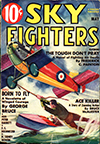 THE Sopwith “Camel†was a name to be proud of back in 1917. This “Camel†of the air did not do without a drink nor was it slow and ungainly like its earthly namesake but it was tricky and uncomfortable to fly. It was similar to its predecessor, the Sop “Pup,†which was an airman’s delight to fly. The Camel’s superiority as a fighting craft was due to those modifications which transformed it into a devilish steed in the hands of its masters.
THE Sopwith “Camel†was a name to be proud of back in 1917. This “Camel†of the air did not do without a drink nor was it slow and ungainly like its earthly namesake but it was tricky and uncomfortable to fly. It was similar to its predecessor, the Sop “Pup,†which was an airman’s delight to fly. The Camel’s superiority as a fighting craft was due to those modifications which transformed it into a devilish steed in the hands of its masters.
It could climb a thousand feet a minute and speed through the air in pursuit of an enemy ship until Camel squadrons were both feared by the enemy and envied by the other Allied squadrons equipped with inferior craft.
Whenever possible Allied nations got hold of Camels and bolstered up their own side with this popular fighting ship. Americans who flew them are still talking of their little temperamental job which gave them heart failure on landings and takeoffs but got them out of some mighty tight situations, which other ships of the time could not have accomplished, The 130 h.p. Clerget motor was extensively used to power the Camel.
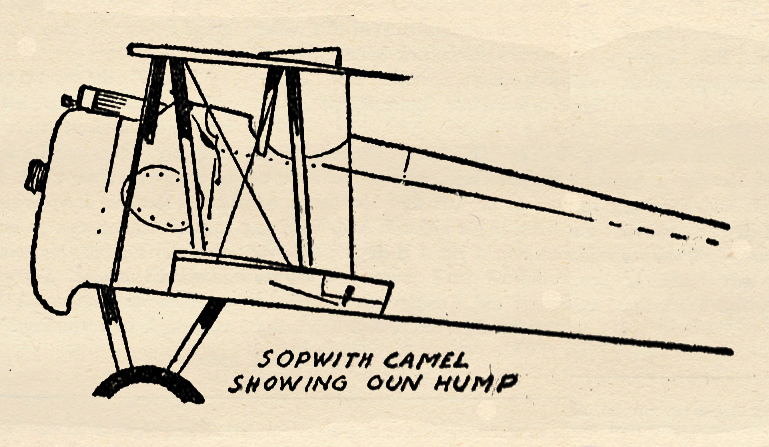
Later most Camels were equipped with Bentley motors which gave them added pep and brought the Camel out of oblivion very much into the limelight for a glorious new era of fighting life. There was hardly a British ace who did not sometime in his career as a flyer sit in the compact cockpit of a Sop Camel and feel the exultation which comes from flying a hair-trigger ship.
Richthofen’s Defeat
Germany’s ace of aces, Richthofen, got in front of a Camel on April 21, 1918. That Camel was piloted by a young Canadian in the R.F.C. named Roy Brown. Capt. Brown’s Camel seemed to be a live thing as it screamed down on the tail of the Baron’s ship which was racing after one of Brown’s comrades. The Vickers guns leaped and bucked in the Camel’s hump.
The sturdy ship seemed to hold its breath helping its pilot’s aim. The Fokker triplane ahead staggered. Richthofen, mortally wounded, slumped in his pit. It was the end for him. and he, like so many other Germans, ended the war with a wraith-like flitting flying thing of wood and fabric with spitting guns forward blasting death to all who dared challenge its rule.
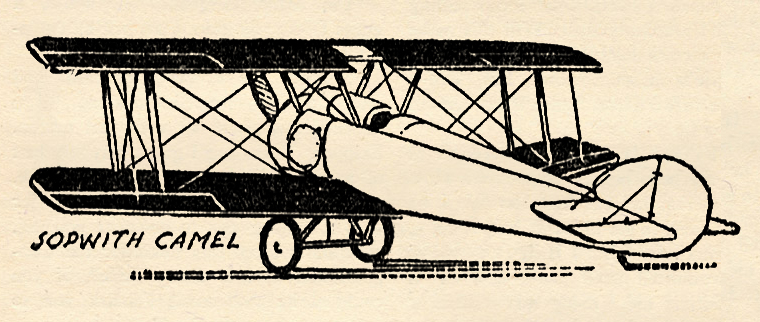
Although the Camel on the cover is not fighting another ship, it is fighting its most important battle of the war. The complete plans for a major offensive of the Allies disappeared suddenly from close-guarded headquarters offices. A half hour after they were missed intelligence officers were on the track. They traced them to a nearby hangar. They saw a plane sweeping into the skies. One of the intelligence men, a flyer, leaped into a Camel whose motor was ticking over. The enemy spy was almost out of sight, but in a slower ship.
Blazing Battle
The Camel gained, it overtook the spy. Guns blazed. Down slithered the front ship to crash near a road in German territory. The pilot crawled out, hailed a driver of a captured British motorcycle and gave the side car’s passenger the valuable papers. As the spy crumpled to the ground the motorcycle roared toward German headquarters. Down screamed the Camel. Its pilot disregarded the peppering from the motorcycle passenger’s rifle fire.
When the little Camel was about to hit the ground machine, its Vickers guns opened up. A deadly blast of bullets raked both Germans. A slug tore into the overheated motorcycle engine. A roaring explosion enveloped the whole ground machine. The stolen papers in the passenger’s dead hand flared up and curled into blackened bits that fluttered and faded into dust. The Camel wheeled, streaked toward home. Another job well done!
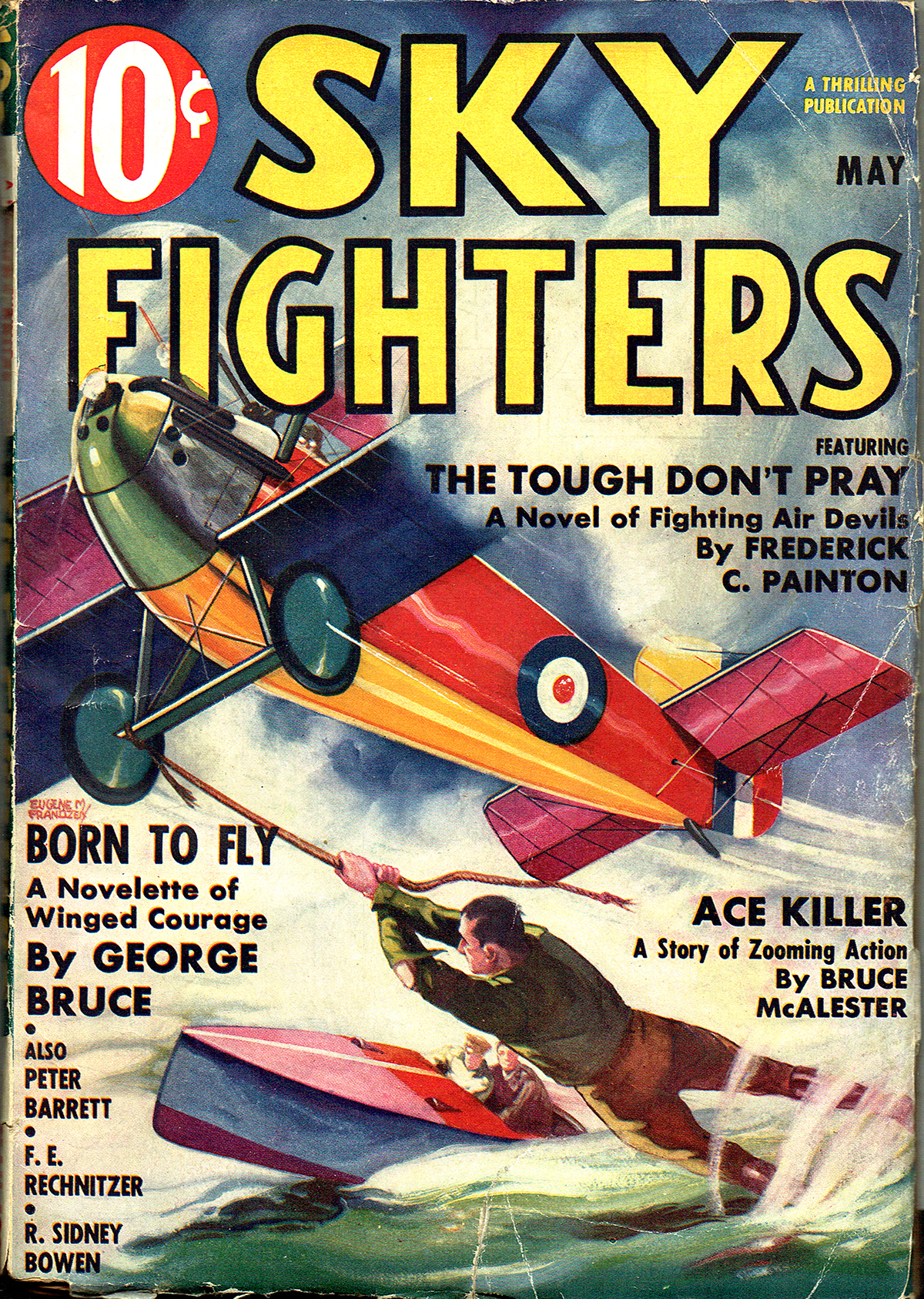
Sky Fighters, May 1937 by Eugene M. Frandzen
(The Ships on The Cover Page)







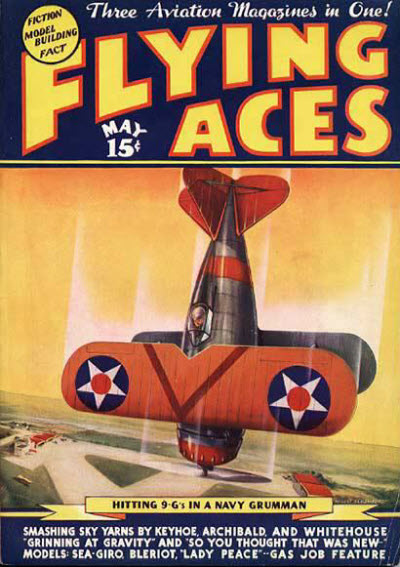 That sound can only mean one thing—it’s time to ring out the old year and ring in the new with that Bachelor of Artifice, Knight of Calamity and an alumnus of Doctor Merlin’s Camelot College for Conjurors—Phineas Pinkham.
That sound can only mean one thing—it’s time to ring out the old year and ring in the new with that Bachelor of Artifice, Knight of Calamity and an alumnus of Doctor Merlin’s Camelot College for Conjurors—Phineas Pinkham. 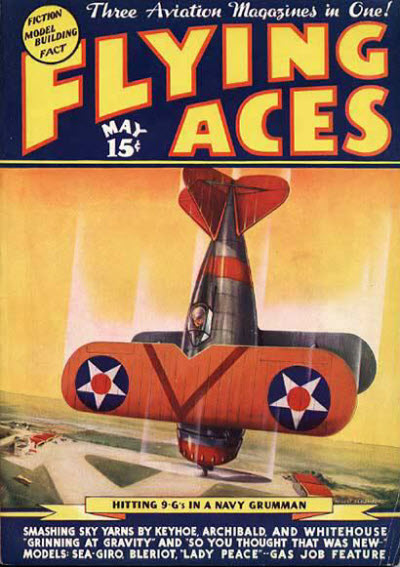 had a story in a majority of the issue of Flying Aces from his first in January 1930 until he returned to the Navy in 1942. Starting in August 1931, they were stories featuring the weird World War I stories of Philip Strange. But in November 1936, he began alternating these with sometime equally weird present day tales of espionage Ace Richard Knight—code name Agent Q. After an accident in the Great War, Knight developed the uncanny ability to see in the dark. Aided by his skirt-chasing partner Larry Doyle, Knights adventures ranged from your basic between the wars espionage to lost valley civilizations and dinosaurs. The mysterious Four Faces—a criminal cabal that seek to control all crime on the earth—has found a way to turn people to stone, which comes in handy while they continue to build their air fleet of stolen ships!
had a story in a majority of the issue of Flying Aces from his first in January 1930 until he returned to the Navy in 1942. Starting in August 1931, they were stories featuring the weird World War I stories of Philip Strange. But in November 1936, he began alternating these with sometime equally weird present day tales of espionage Ace Richard Knight—code name Agent Q. After an accident in the Great War, Knight developed the uncanny ability to see in the dark. Aided by his skirt-chasing partner Larry Doyle, Knights adventures ranged from your basic between the wars espionage to lost valley civilizations and dinosaurs. The mysterious Four Faces—a criminal cabal that seek to control all crime on the earth—has found a way to turn people to stone, which comes in handy while they continue to build their air fleet of stolen ships!